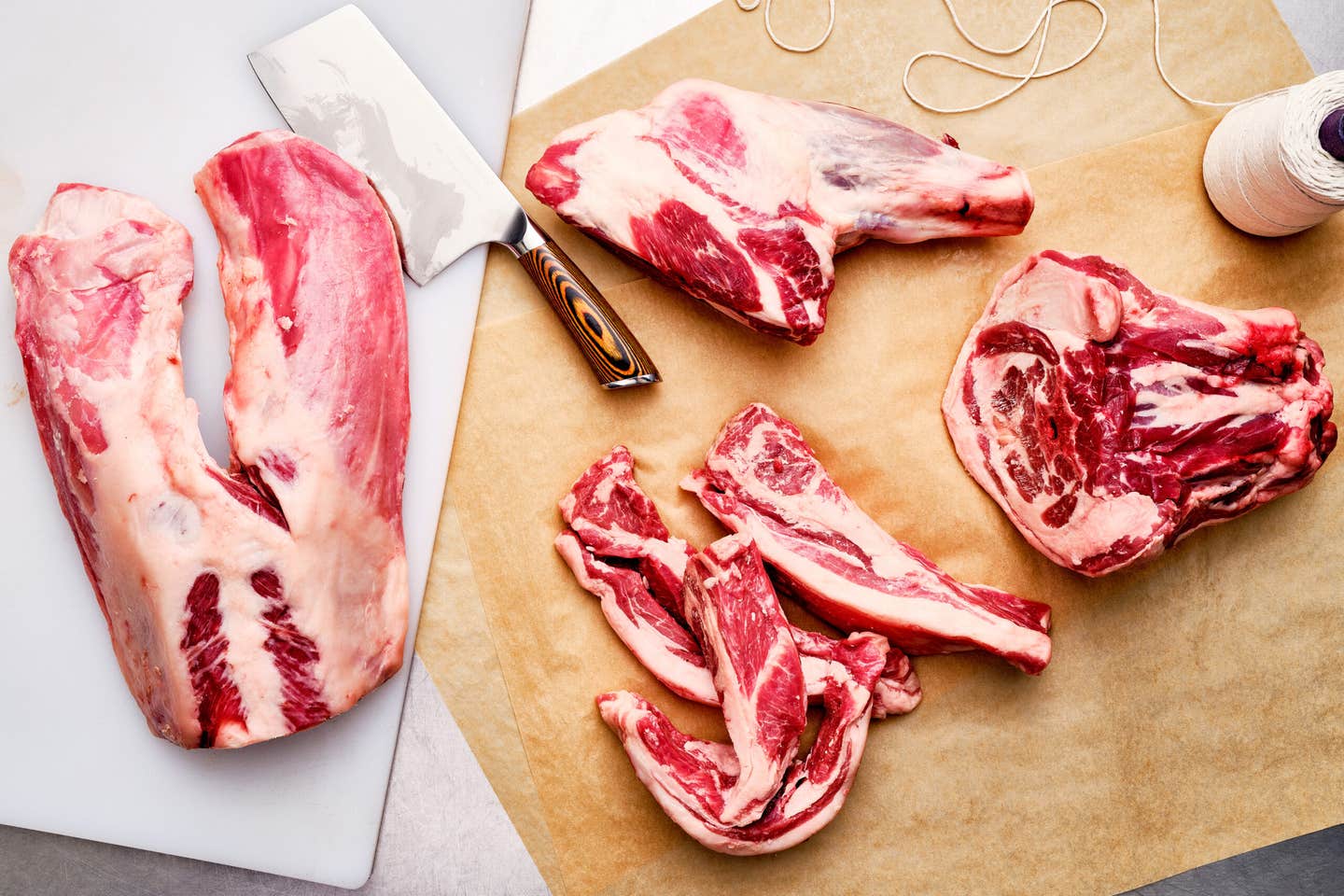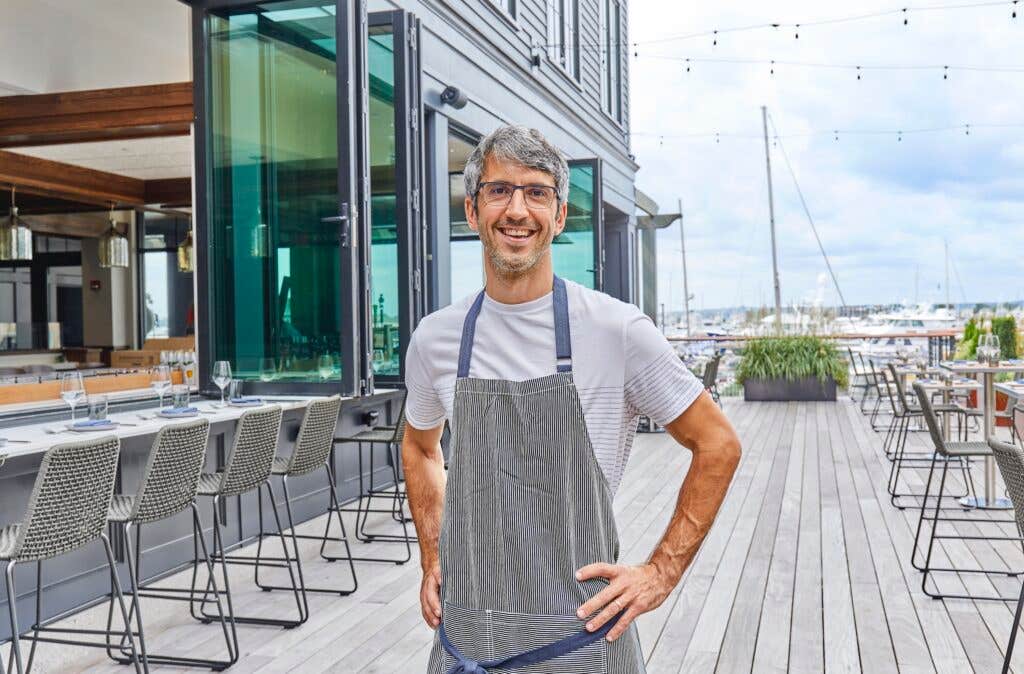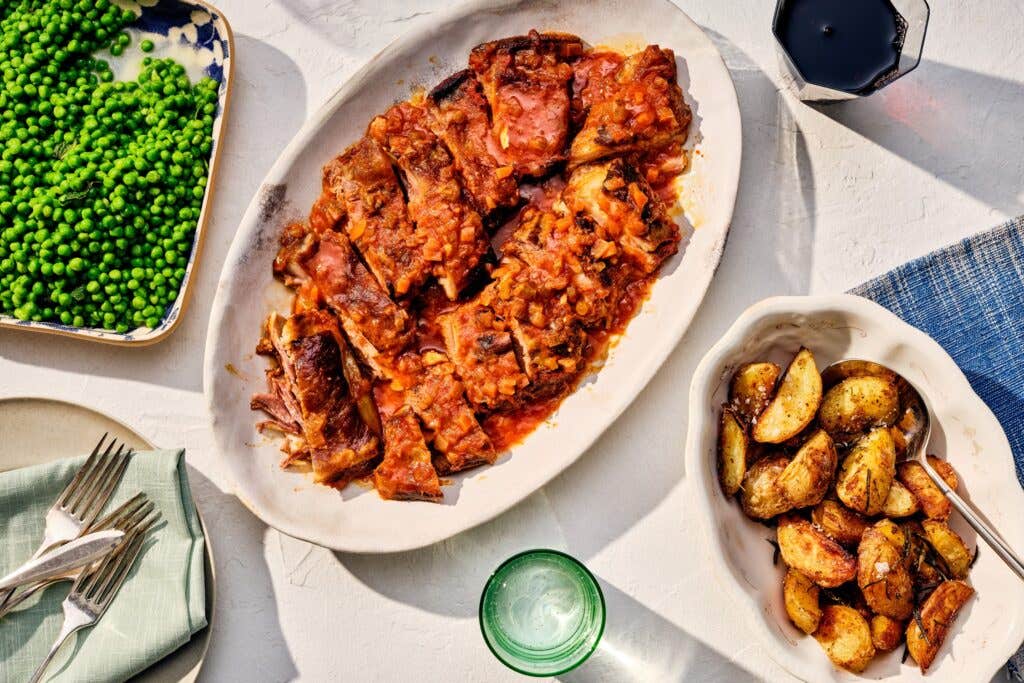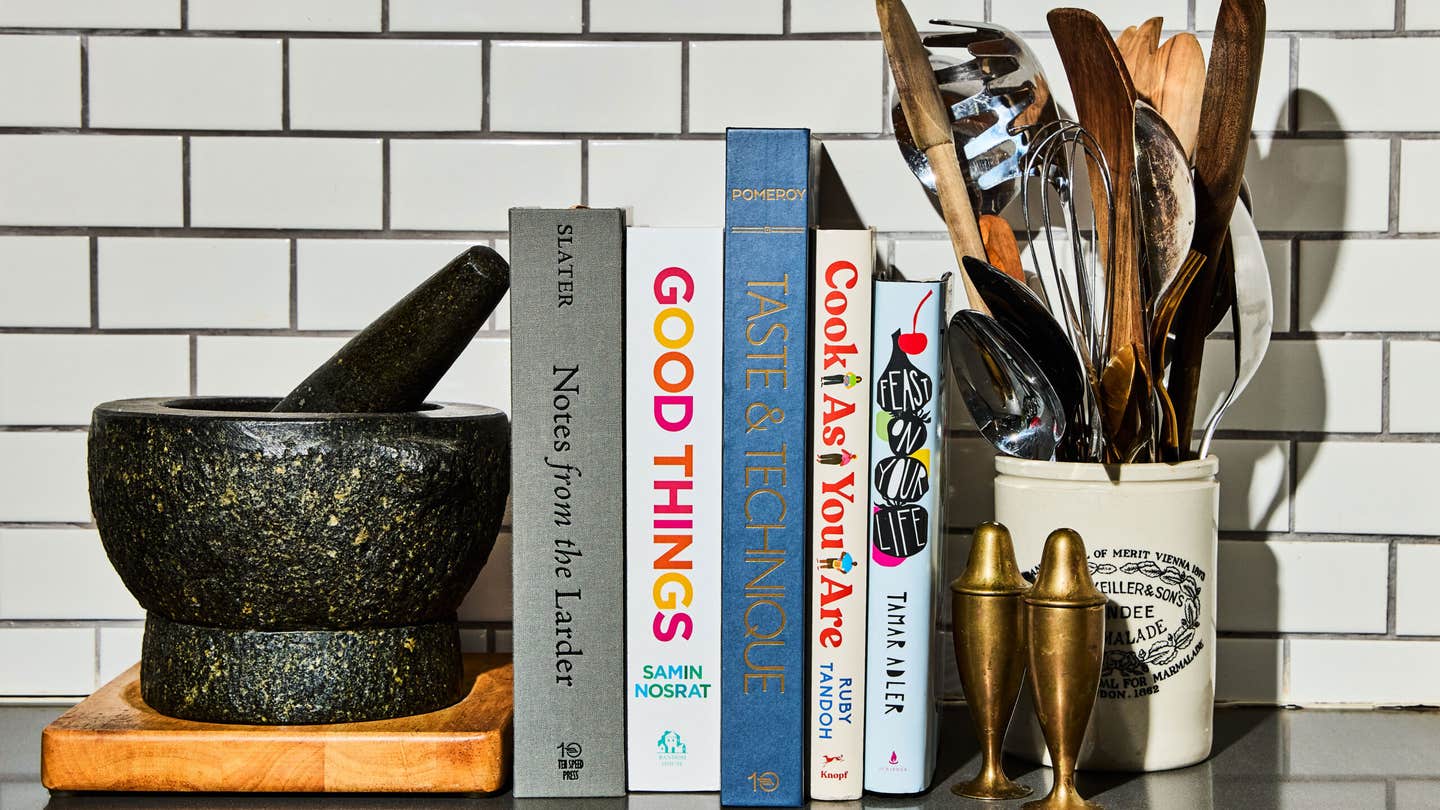
Ditch Your Usual Easter Roast for This “Freestyle” Italian Braise
There’s more to the holiday than lamb legs and chops.
In Rhode Island, Italian food is practically sacrosanct. According to the New England Historical Society, the most Catholic state in America is also the most Italian, with residents of Italian descent making up nearly 19 percent of the population. This community’s influence on the coastal state’s rich and varied cuisine is indisputable, and at no time is that more evident than during the Church’s red-letter days. With Holy Week upon us, Newport chef Kevin O’Donnell is already braising the Easter lamb.
A local boy who trained in Providence’s Johnson & Wales University, O’Donnell didn’t stick around Rhode Island for long. In fact, he worked for years in kitchens in Italy, Paris, and New York City before finally returning to New England. He garnered accolades at Boston’s Salty Pig and SRV, the latter of which was named “best Italian restaurant” by Boston Magazine. Then, in 2019, he decided to come back home—and as he prepared to open his new restaurant, Giusto, on Newport’s Commercial Wharf, the COVID-19 pandemic hit. Fortunately for Rhode Island’s local residents and summer visitors, things are looking up.

O’Donnell describes the Giusto menu as “freestyle Italian,” and while there are a few playful nods to regional specialties (note the “Olneyville-Style” mortadella; if you know, you know), the food and all-natural, all-Italian wine selection feels oceans away from Providence’s iconic red sauce joints. Inspired by his own Italian heritage—O’Donnell’s maternal great-grandparents emigrated from Campania—and his years cooking in Umbria, the chef makes a point of featuring and celebrating his home state’s ingredients. Nearby Point Judith is considered by many to be the squid capital of the Atlantic, and the tentacle-patterned wallpaper lining Giusto’s private dining room is a nod to the region’s native calamari. Lamb, O’Donnell, proudly points out, is always on the menu, sourced exclusively from Hopkins Southdowns Farm, some 45 minutes away.
Long a fixture on springtime holiday tables, lamb’s popularity transcends cultural and religious borders, so O’Donnell tends to avoid the more popular cuts like chops and legs—particularly around Easter, when Don Hopkins, the farm’s proprietor, is scrambling to keep up with demand for those centerpiece roasts. Instead, the chef prefers to offer a bright and aromatic braise which can be easily adapted to any cut with a fair amount of connective tissue, which enriches the citrus- and harissa-spiked cooking juices with flavor and collagen. I hopped on a call to chat with him about the dish, Rhode Island lamb, and the art of the warm-weather braise.
This interview has been edited and condensed for clarity.

Craddock: This recipe is beautiful, and so, so delicious. Tell me a little bit about the farm that inspired it.
O’Donnell: Yeah! So it was probably like seven years ago, I started working with Hopkins Southdowns’ meat. I was living in Boston and working at SRV and I was invited by the Ocean House to do a guest chef dinner focusing on Rhode Island farms. That was the first time I tasted their lamb and I was really impressed. I had kind of been out of the scene in Rhode Island for a while and it was inspiring to find a farm that cared so much, and just good lamb coming from Rhode Island. So when I decided to move back home to open a restaurant here, they were at the top of my mind as one of the farms to use.
Tell me more about the flavor—why is it so special?
Yeah, so starting with the fat, it's just clean-tasting, almost sweet, not super gamey. Of course you want lamb to taste like lamb, which it does. But it's not so gamey that you want to start trimming off all the fat. Any dish that we've used it in has been successful. Italian flavors, Mediterranean flavors, Middle Eastern flavors… like the braise recipe that we did here is kind of a bridge between Italian and Middle Eastern cuisine and I just love the flavor of the meat and the texture is great in this too. The age in which they slaughter the lambs gives them the perfect balance of flavor and tenderness so you can really use the entire animal.
Do you notice any major differences between American lamb and the lamb that you were using in Italy? Does the domestic meat come close in flavor?
You know, Italy’s lamb is actually similar to American lamb. New Zealand or Australian lamb is from smaller animals, but American and Italian versions are a little more closely related. What they feed them, at least at Hopkins Farm and this other farm I've worked with, Elysian Fields—which is incredible as well—they’re both kind of on par with the Italian stuff. Super tender, really delicious, with sweet fat—flavorful, but without being super gamey.
Let's talk more about the recipe itself. You mentioned that this has some Middle Eastern flavors. Is the recipe itself a traditional dish or is it something that you created?
Well, a lot of how we approach Italian food and Italian cooking is we're taking something that is fairly traditional, whether it's a technique or a recipe or ingredient, or a combination of ingredients. And then we adapt it to use seasonal produce, or to use something from Rhode Island, or just to put our own spin on it, getting it to be a little fresher. So this particular recipe is kind of a play on a dish that a lot of restaurants in Rome do, called coratella. That is really mostly just made with lamb offal, but some cooks do add tongue and shanks and all those kind of odd bits that you might need to braise a little bit. They also use spleen and lung and kidneys. It's a super common peasant dish that uses up everything—whatever cuts you have, you throw it in there. It's served a lot in the spring, maybe with artichokes or peas and tons of fresh herbs. So I was initially inspired by that dish. I actually originally tried to put the classic version on the menu and people were like lamb heart? Lamb kidneys? It's a tough sell, you know. So, we switched over to lamb belly, shanks, shoulder—anything that you can braise still makes it delicious. And then I'm a huge fan of harissa. I just love it. There's this rose petal harissa that we use a lot, so we added that too.
Oh, we used a rose petal harissa when I baked at Sofra years back!
You know what? It was probably the same thing! I found out about it through my old business partner's wife [Paige Lombardi], who is the chef at [Sofra’s sister restaurant], Oleana. I think it's Belazu [brand].
What I really like about this recipe is that it’s so adaptable by design—like, hey, if you go to the farmers market or grocery store and you want lamb and there are no racks or chops, you can get any braising cut and make the dish.
That's a good point.
Tell me a little bit about the specific characteristics of the four cuts you recommended for this recipe. Would there be changes to the method if someone wanted to swap the belly out for lamb shanks, shoulder, or neck?
Well, any meat on the bone will take a little bit longer to cook. And I would say that if somebody was using this recipe for either neck or shanks, they will need to scale the meat up. For example, the main recipe calls for two pounds of lamb belly. The meat-to-bone ratio is pretty high in lamb belly (or shoulder). But it’s fairly low in shanks and necks. So I would double the weight of the meat when using neck or shanks to factor in the loss from the bone, so you still get a decent amount of meat in the finished yield.
Then the vessel that you choose to cook in is really important, too. How light is the pot? Is it a heavy Le Creuset Dutch oven? Is it circular or rectangular? Large or small? Does it have a tight-fitting lid? All of those things really make a difference if you’re trying to braise something in liquid. So if you’re following this recipe to a tee, I would choose a larger, wide-bottomed pot.
Whichever cut you decide to use, you should braise in something that ensures the meat is covered at least halfway with the liquid. And if it does stick out more than that, turn the lamb over halfway through cooking so that the top doesn't dry out and so the whole thing has plenty of time underneath those braising juices.
I understand that your time cooking in Italy as well as your Italian roots have inspired your cooking. Are there any specific recipes or techniques that you've carried over from your family that you're still using today?
I wouldn't say too many recipes, but certainly a lot of inspiration. My [Italian American] grandmother would never waste anything. And, you know, that carried on down to my mom, which carried on to my brother and me. And just the art of being able to come up with something delicious from almost nothing and—you know, opening up the fridge and just making magic happen with odd cuts or leftovers. I don't want to say it's “so Italian,” because it's also French and Spanish too, being able to turn leftovers into a totally different new dish, being able to appreciate and use every last bit of the ingredient, whether it's whatever cuts of lamb the farmer has or whatever vegetable scraps or leftovers you find in the fridge.
Do you feel like “Easter lamb” is still a big deal in Rhode Island?
You know, we’ve been talking a lot about this right now—we just had a meeting, finalizing our Easter menu. My parents are both Christian—my mother's Baptist, my father's Catholic—and every time I write a menu, there's always lamb on it in the spring. I think it’s still a pretty important tradition for me, personally. And we always try to keep Don in the loop on any menu changes, especially if we're going to be switching out a cut because we want him to be a part of that decision as well. We were talking to him a few weeks ago and he said, “yeah, it's going to be crazy—the springtime, around Easter, is our busiest time of the year.” So, yeah. I would say the answer to your question is absolutely, yes. And everybody's getting legs of lamb or chops, so he's banking and hoping restaurants like ours will use all of the off-cuts, so we'll stay as far away from the legs and the racks as we possibly can because demand is through the roof for those. I’m just hoping that this recipe helps to open people's eyes a little bit so they can see that, you know, it doesn’t always have to be just like—roast leg of lamb with rosemary and call it a day.
I'm thinking about the meal that I ate at your restaurant and what really stood out to me was how very seafood- and produce-forward the menu is. Would you say the main meat you have on the menu is lamb or are you working in a lot of other proteins as well?
Lamb is always on our menu, no matter what. And it's always from Hopkins Southdowns. We also have a crispy pork belly dish and we usually sneak a little ‘nudja in somewhere because we love it. We just put a ribeye on for people who are looking for something simple. But otherwise, yeah, I would say you're right, we don't have a lot of meat on the menu. And getting into summer, we’ll certainly lean even more heavily towards seafood.
You're probably not going to be serving braises through the summer, right? Will you switch to quicker-cooking cuts in the warmer months?
Actually, I still love braised food in the summer—so long as it’s lightened up a little, with some fresher ingredients or flavors. Say lamb neck, for example. I might braise the meat beforehand, cool it down in the liquid, then the next day, rub it with garlic and yogurt, some harissa again (because I'm obsessed), then finish it on the grill. Now it doesn't seem like a braise any more, it's a grilled dish. So I think there are ways to still use those odd braising cuts year-round, for sure.
Braising works so well in slow cookers and Instant Pots, so I guess you don’t have to heat up your whole kitchen by running the stove all day, either.
Totally.
I'm convinced!
Sold.
Keep Reading
Continue to Next Story










